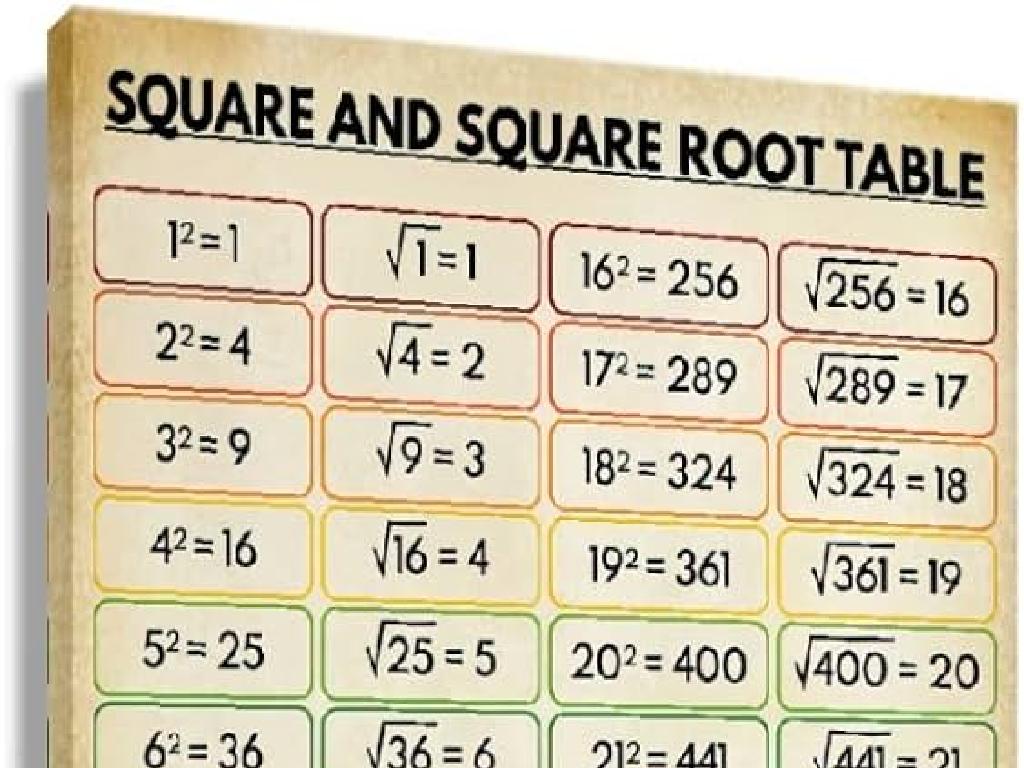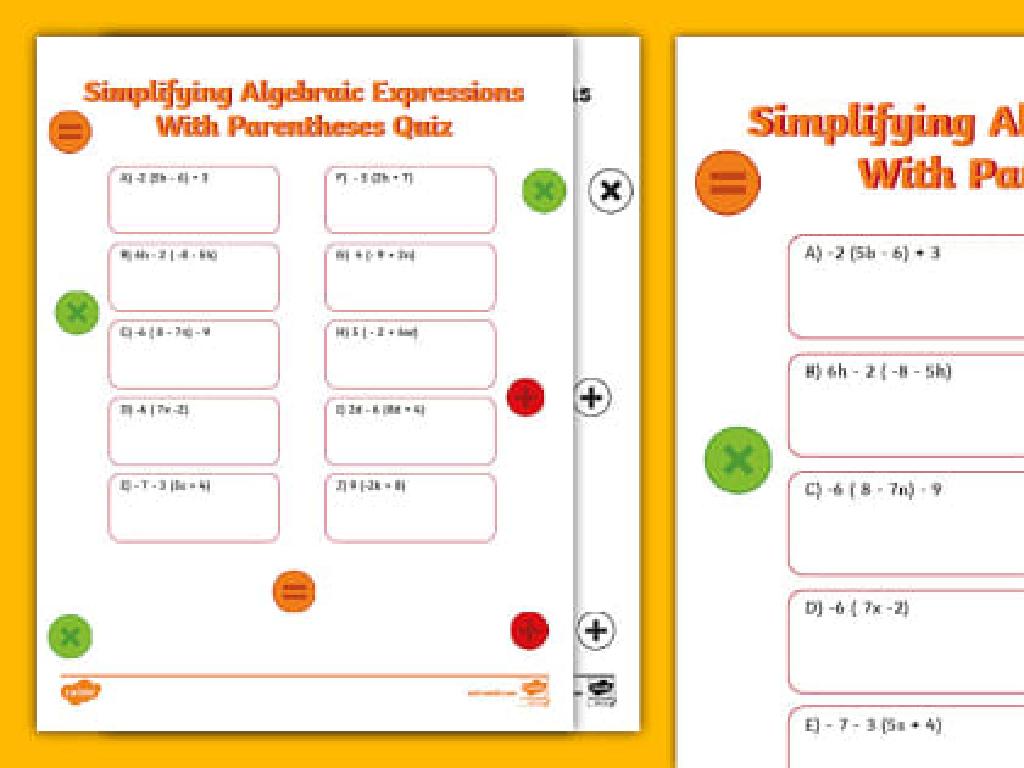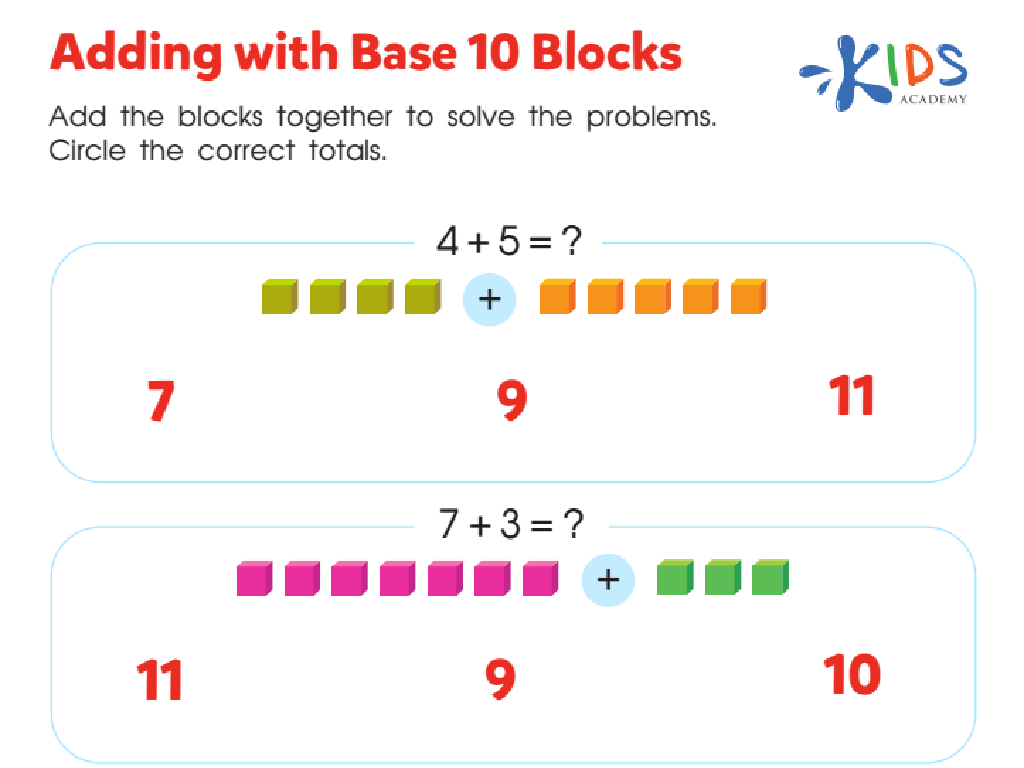Correct Inappropriate Shifts In Verb Tense
Subject: Language arts
Grade: Fifth grade
Topic: Verb Tense
Please LOG IN to download the presentation. Access is available to registered users only.
View More Content
Welcome to Verb Tenses!
– Greetings and today’s focus
– Understanding verb tenses
– Verb tenses tell us when an action happens.
– The importance of correct tense
– Using the right tense helps the reader understand the time of actions.
– Consistency in storytelling
– Shifting tenses can confuse readers and disrupt the flow of a story.
|
Begin the class with a warm welcome and introduce the topic of verb tenses, explaining that they are used to indicate the time of an action or event. Emphasize the importance of using the correct verb tense to ensure clarity in communication. Explain that maintaining the same tense throughout a piece of writing helps the reader follow along with the timeline of events. Use examples to show how inappropriate shifts in verb tense can cause confusion. Plan an activity where students identify and correct sentences with incorrect verb tense usage. This will help them understand the concept in a practical way and see the impact of verb tenses on the clarity of writing.
Understanding Verb Tenses
– What is verb tense?
– Verb tense tells us when an action happens.
– Examples: past, present, future
– Past: walked, Present: walk, Future: will walk
– Activity: Identify verb tenses
– Look at sentences and determine the tense of the verbs.
– Keep tenses consistent in writing
|
This slide introduces the concept of verb tense to the students, explaining that verb tense indicates the time of action or state of being. Provide clear examples for past, present, and future tenses using simple and relatable verbs. For the quick activity, prepare a few sentences where students will identify the tense of the highlighted verbs. Emphasize the importance of using the correct verb tense to maintain consistency in writing. This will help students understand how shifting tenses can confuse the reader. Encourage participation and provide immediate feedback during the activity.
Correcting Verb Tense Shifts
– Understanding verb tense shifts
– A shift in verb tense occurs when the tense changes unexpectedly in a sentence.
– When shifts are appropriate
– Appropriate: ‘She ran (past) to the store, and now she is walking (present) home.’
– When shifts are not appropriate
– Inappropriate: ‘He eats (present) his lunch and then he went (past) outside.’
– Practice: Fixing tense errors
– We’ll work together to correct sentences with incorrect verb tenses.
|
This slide introduces the concept of verb tense shifts and helps students recognize when these shifts are appropriate and when they are not. Start by explaining that verb tenses tell us when an action happens. Emphasize that usually, a paragraph should stick to one tense unless there’s a reason to change. Show examples of both appropriate and inappropriate shifts to clarify the concept. For the group practice, provide sentences with tense errors and guide the students to correct them as a class activity. This will help reinforce their understanding and give them practical skills to apply to their writing.
Mastering Verb Tenses: Consistency is Key
– Stick to the time frame
– If you start in past tense, stay in past tense.
– Correct tense for action sequences
– For events in order, use tenses that match the sequence.
– Watch for conditional verbs
– Conditional verbs often need special tenses.
– Practice makes perfect
|
This slide aims to teach students the importance of maintaining consistency in verb tenses to avoid confusion. Rule 1 emphasizes that once a time frame is established in writing, it should remain consistent throughout. Rule 2 is about using the correct tense to show the order of actions, especially in narratives. Rule 3 highlights the need to use the correct verb tense in conditional sentences, which often involve ‘if’ clauses. To reinforce these rules, provide students with examples and exercises where they can practice identifying and correcting inappropriate shifts in verb tenses. Encourage them to write short paragraphs or stories, paying close attention to the verb tenses they choose.
Let’s Practice Together: Verb Tense Corrections
– Interactive sentence practice on board
– Identify and correct tense shifts
– Find verbs and decide if the tense is correct
– Discuss corrections as a class
– Why did you choose to change or keep the tense?
– Understand consistent verb tense usage
– Learn why maintaining the same tense is important
|
This slide is for an interactive class activity focused on identifying and correcting inappropriate shifts in verb tense. Write sentences on the board that contain errors in verb tense consistency. Have students come up to the board to identify and correct the errors. After each correction, engage the class in a discussion about why the correction was necessary and how it improves the sentence. Emphasize the importance of maintaining the same verb tense to ensure clarity in writing. Provide guidance on how to spot tense inconsistencies and offer examples of correct tense usage. Prepare to offer alternative activities for students who may grasp the concept more quickly, such as creating their own sentences with consistent tenses or helping peers with corrections.
Your Turn: Verb Tense Detective!
– Split into small detective teams
– Each team gets a story with hidden ‘time-travel’ errors
– Work as a team to fix the verb tense mistakes
– Discuss with your team to find and correct the verbs that don’t match the story’s time
– Present your corrected story to the class
|
This group activity is designed to reinforce the lesson on correct verb tense usage. By working in small groups, students will engage in collaborative learning, enhancing their understanding of verb tenses. Each group will receive a short story containing several verb tense errors, which they will work together to identify and correct. This exercise will help students apply their knowledge of verb tenses in a practical context. After the activity, each group will present their corrected story to the class, allowing for peer learning. As a teacher, facilitate the activity by providing guidance and ensuring each group stays on task. Offer assistance as needed and praise their efforts to foster a positive learning environment.
Review and Reflect: Verb Tenses
– Recap today’s verb tense lesson
– Discuss our verb tense learnings
– How verb tenses affect the meaning and clarity of sentences
– Reflect on the importance of verb tenses
– Using the right tense helps readers understand when actions happen
– Why correct tense matters in writing
– It ensures consistency and helps avoid confusion in stories or instructions
|
This slide aims to consolidate the students’ understanding of verb tenses and their significance in writing. Begin by summarizing the key points from the lesson, ensuring that students can identify and use different tenses correctly. Engage the class in a discussion about what they have learned, perhaps using examples from their own writing or class exercises. Emphasize the importance of maintaining the correct verb tense to convey the time of actions accurately and to keep writing clear and coherent. Encourage students to reflect on how using the correct verb tense can improve their storytelling and instructional writing, making their communication more effective. As an activity, consider having students work in pairs to find and correct tense errors in sample paragraphs.
Class Activity: Verb Tense Consistency
– Write a short story individually
– Focus on consistent verb tenses
– Don’t switch tenses mid-story
– Use past, present, or future tense
– Keep the same tense throughout
|
This activity is designed to help students practice maintaining the same verb tense throughout a narrative. Provide a brief review of past, present, and future tenses before starting the activity. Encourage students to choose a tense and stick with it, whether they’re writing about something that happened (past), is happening (present), or will happen (future). Offer prompts if needed, such as a day at the beach or a trip to the zoo. After writing, students can exchange stories with a partner to check for tense consistency. Possible variations of the activity could include writing a story as a group, where each student contributes a sentence, or rewriting a paragraph from a book in a different tense.
Wrapping Up: Verb Tense Consistency
– Importance of correct verb tense
– Homework: Write about your last holiday
– Describe your holiday activities using consistent verb tenses.
– Focus on verb tense in your story
– Ensure all verbs are in the past tense to match the holiday time frame.
– Peer support and questions encouraged
– Work together and ask for help if you’re confused about verb tenses.
|
As we conclude today’s lesson, emphasize the importance of using the correct verb tense to maintain clarity in writing. For homework, students will write a paragraph about their last holiday, which will help them practice using the past tense consistently. Encourage them to pay close attention to the tenses they choose and to keep them the same throughout the paragraph. Remind students that they can learn from each other and should feel comfortable asking questions if they’re unsure about which tense to use. This exercise will reinforce the day’s lesson and give them practical experience in identifying and correcting inappropriate shifts in verb tense.






